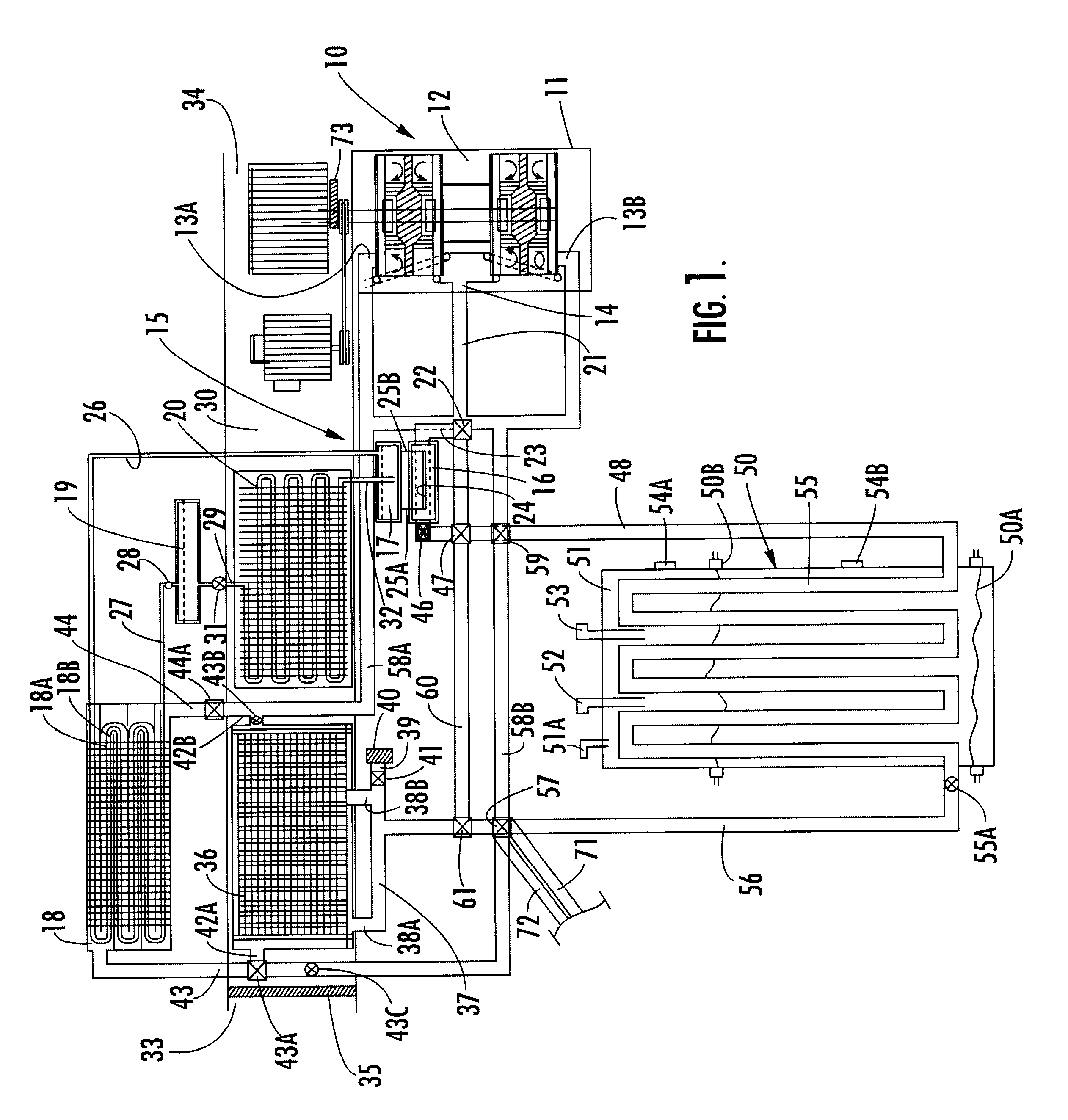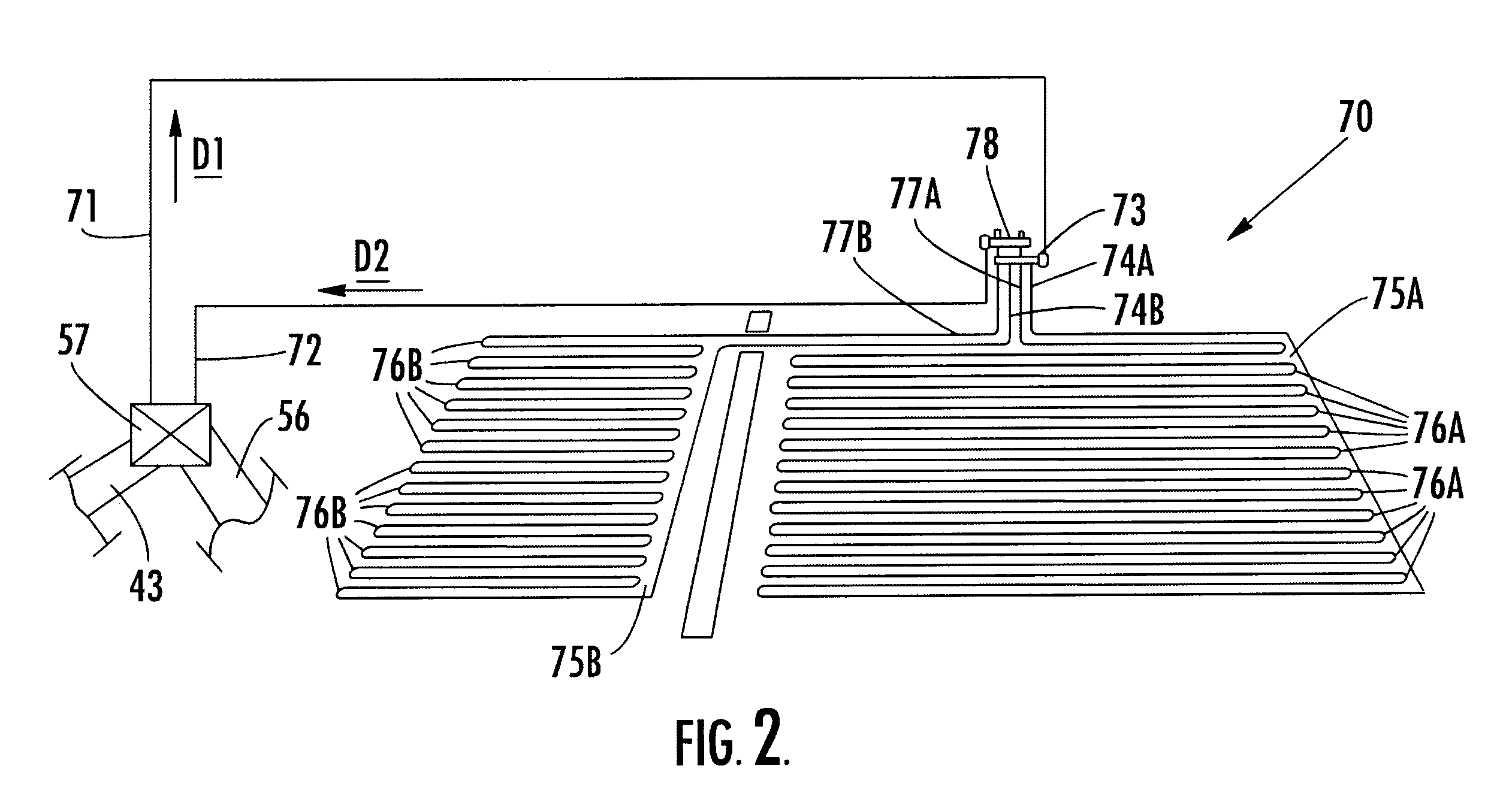Heating and cooling system using frictional air heating
a technology of frictional air heating and cooling system, which is applied in the direction of fluid friction for heating, heating types, stoves or ranges, etc., can solve the problems of shortening the overall life of the motor, limiting the extent to which the temperature of the air passing through the enclosure can be increased, and compromising the efficiency of prior art devices. , to achieve the effect of efficient utilization
- Summary
- Abstract
- Description
- Claims
- Application Information
AI Technical Summary
Benefits of technology
Problems solved by technology
Method used
Image
Examples
Embodiment Construction
Referring now to the drawings, a frictional heating and cooling system according to the present invention is illustrated in FIG. 1 and shown generally at reference numeral 10. The heating and cooling system 10 includes an enclosure 11 defining an interior 12, which is in fluid communication with air inlet manifolds 13A and 13B, and an air outlet manifold 14. Air is drawn through the air inlet manifolds 13A and 13B into the interior 12, and is discharged therefrom through the air outlet manifold 14 after being heated within the interior 12. As discussed in detail below, the air is heated within the interior 12 to a temperature of between 140.degree. F. to 460.degree. F., and is discharged from the enclosure 11 through the air outlet manifold 14 at a high volumetric rate. A number of dispatch and directional valves are positioned throughout the frictional heating and cooling system 10 and cooperate together to control the passage of air through the system 10 to ensure, among other thi...
PUM
 Login to View More
Login to View More Abstract
Description
Claims
Application Information
 Login to View More
Login to View More - R&D
- Intellectual Property
- Life Sciences
- Materials
- Tech Scout
- Unparalleled Data Quality
- Higher Quality Content
- 60% Fewer Hallucinations
Browse by: Latest US Patents, China's latest patents, Technical Efficacy Thesaurus, Application Domain, Technology Topic, Popular Technical Reports.
© 2025 PatSnap. All rights reserved.Legal|Privacy policy|Modern Slavery Act Transparency Statement|Sitemap|About US| Contact US: help@patsnap.com



